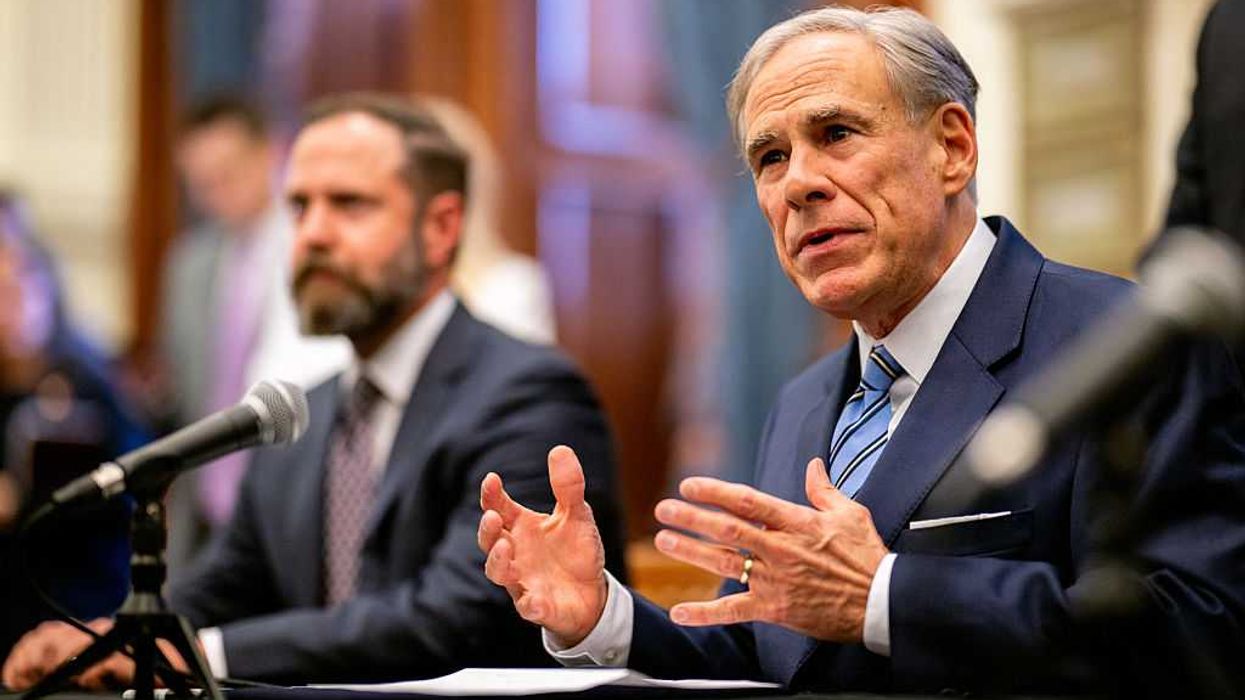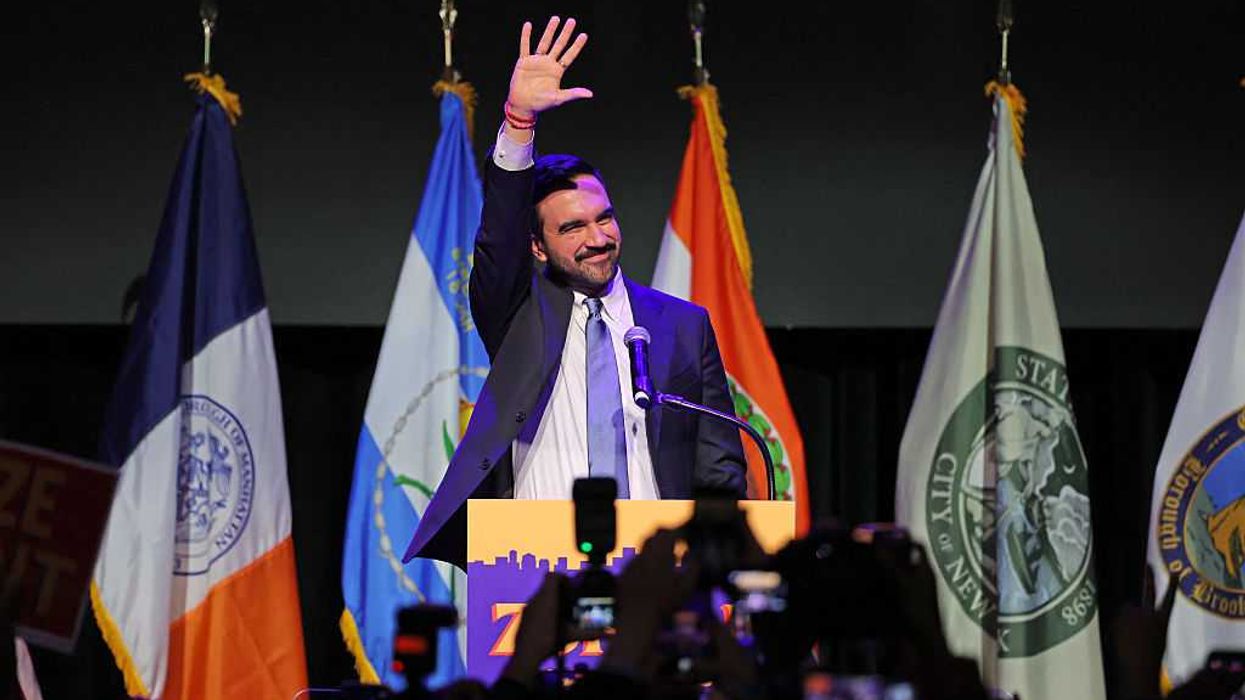The Environmental Protection Agency (EPA) was formed December 2, 1970. According to the EPA's website, Rachel Carson's book Silent Spring played a pivotal role in establishing one of the government's most powerful regulatory arms. In fact, the EPA refers to itself as "the extended shadow of Rachel Carson."
This week, in honor of Earth Day, we take a look at the environmentalism movement, the EPA, global warming and valuing nature over man.
The four-part series is compiled below for your convenience.
Environmentalism Part I: The EPA, Silent Spring and DDT
The most important day of the entire year is upon us — Earth Day on April 22nd. It's a day in which environmentalists will overlook and dismiss earth's inhabitants and literally choose to celebrate the dirt beneath our feet.
Earth Day isn't really about picking trash in your local park or remembering to recycle your soda can. It isn't even about hugging a tree. It has never been that innocent. Earth Day is a yearly reminder that humanity must be controlled, manipulated and even destroyed for the good of the planet.
How have we come to place a higher value on plant life than human life? It all started with a selection from the Book of the Month Club.
In 1962, Rachel Carson published Silent Spring, the book credited with igniting environmentalists in the United States. One hundred fifty thousand copies of "Silent Spring" were mailed to Book of the Month members and made their way into suburban America. With chapter titles such as "Elixirs of Death" and "Rivers of Death," Carson successfully mixed eloquence and horror to instill fear about the popular insecticide Dichloride Diphenyl Triclorethane, better known as DDT.
DDT was considered to be a miracle powder that played an extraordinary role in winning World War II. During the Second World War, DDT was used to protect allied troops and civilians from malaria, typhus and other insect-born diseases.
The insecticide proved to be invaluable against the Germans. In Italy, the fascists had strategically used mosquito-filled marshes to their advantage. And 22,000 troops were infected with malaria, until the American forces deployed crop dusters and DDT spray teams on the area, wiping out the mosquitos for good and allowing the allies to liberate Rome. DDT's efficiency at destroying insect-born illness was so great that many saw the potential in using DDT outside the theaters of war.
In 1948, the Nobel Prize was awarded to Dr. Paul Moller for discovering DDT. It eradicated diseases like no other insecticide before. But no one seems to remember all the good DDT did for the people of the world.
Rachel Carson's narrative that DDT was detrimental to both nature and human health was hungrily gobbled up by the public and government officials alike. Within eight years of its publication, Silent Spring was directly credited with the creation of the EPA.
In 1972, only ten years after Silent Spring was published, the U.S. banned DDT and other countries quickly followed suit. Once countries started falling prey to Carson' misinformation about DDT, malaria ran rampant. The devastating insect-born disease once again ravaged South Africa and South American countries.
Robert Watts of the National Institutes of Health once remarked, "The ban on DDT may have killed 20 million children."
One could argue that Rachel Carson cared more about singing birds and leaping fish than children. One could also argue she was an accomplice in the deaths of millions around the world.
Environmentalism Part II: The Population Bomb
Earth Day will be celebrated by more than a billion people, making it the largest secular observance in the world. How did this singular day and its ideas become so engrained in society? In an ironic twist of fate, books --- those strange, obsolete things made from the destruction of trees --- have a lot to do with it.
You've learned about Rachel Carson's book Silent Spring. The charmingly illustrated and eloquently worded volume against the insecticide DDT captured the imaginations of government officials and the public alike. However, a similar book even more terrifying was published during the feverish haze of 1968.
The Population Bomb was Stanford University professor Paul Ehrlich's dire and impatient warning to mankind. Ehrlich painted an apocalyptic picture of the future: Too many people were being born and too many resources were drying up. The professor believed this was a fatal scenario for both the planet and humanity. He even went so far as to compare humanity to cancer.
"A cancer is an uncontrolled multiplication of cells. The population explosion is an uncontrolled multiplication of people. Treating only the symptoms of cancer may make the victim more comfortable at first, but eventually he dies, often horribly. A similar fate awaits a world with a population explosion, if only the symptoms are treated," Ehrlich said.
Ehrlich had many actual solutions on how to combat the disease of the surplus population. He was a staunch supporter of families having no more than two children, so much so that he outlined in The Population Bomb how to attack the media for promoting large families. Paul Ehrlich also floated the idea of creating a federal Department of Population and Environment (DPE), arguing that one of the DPE's main focuses would be encouraging more research on human sex determination to ensure first born children were males.
The Population Bomb proved so popular Paul Ehrlich was able to co-found an activist group named Zero Population Growth (ZPG). Its members were passionate about decreasing the population and expert at using sympathy to get their talking points across. The group still exists as the re-branded Population Connection, continuing to spread their morbid fantasies about who should be born into this world --- and who should not.
If you're one of the billion people celebrating Earth Day this week, just remember: One of the founding environmentalists in America thinks the best way for you to celebrate is to drop dead.
Environmentalism Part III: The First Earth Day
Two years after professor Paul Ehrlich published The Population Bomb, he was invited to speak at the first Earth Day in the United States where he shared his doomsday vision of an overpopulated planet with a free-spirited and bell-bottomed-clad congregation. The dark rhetoric profoundly contrasted visions of happy college students wielding signs and singing songs by the Fifth Dimension.
The first Earth Day was no day for joyful celebration. April 22, 1970, was much more an eve of destruction than an age of Aquarius. Speakers spewed inflammatory language about the earth and humanity being in a crisis for survival. The urgency in the so-called polluted air was palpable.
Earth Day founder, Senator Gaylord Nelson from Wisconsin, had been sounding the alarm for at least a year before growing his pet project into a national demonstration. His philosophy was to elect an "ecology" congress as the 92nd congress that would build bridges between men and nature's systems, instead of "building more highways and damns and new weapon systems that escalate the arms race."
At least Senator Nelson was looking out for the livelihood of people. Many Earth Day speakers were less interested in the fate of humanity. Dr. James Bonner, for example, delivered an anti-human message, proclaiming man as the villain draining the planet's resources and manipulating it for his own selfish desires.
Interestingly, one of the most prominent issues discussed on the first Earth Day was how to stop humans from bringing about global cooling. In 1970, global warming wasn't even a concern. Hippies and politicians actually believed that the earth was getting too cold --- and the media ate it up. Ecologist Kenneth Watt even predicted an ice age as early as 2000.
Many reputable people believed in the less-than-accurate alarmism promoted on the very first Earth Day. In fact, a prominent and trusted news anchor didn't think Earth Day went far enough. Walter Cronkite expressed on air a great disappointment in Earth Day participation and the "skylark mood, which contrasted rudely with the messages of apocalypse."
The story of the first Earth Day in America wouldn't be complete without mentioning the figure eco activists have consistently tried to hide in the shadows --- Ira Einhorn.
Einhorn was the master of ceremonies at the first Earth Day event in Philadelphia. He was well-known on the campus of the University of Pennsylvania for his tie-dye attire and message of peace and love. His diary, however, was filled with passages about inflicting pain on women and the joy it brought him. Today, Ira Einhorn, the self-proclaimed founder of Earth Day, is serving a life sentence for fatally beaten and composting his girlfriend. The pioneering Earth Day enthusiast serves as a fitting symbol of how little value some environmentalists place on human life.
Environmentalism Part IV: The Biggest Hoax of All Time
The impending ice age foreshadowed by scientists, politicians and hippies on the first Earth Day in 1970 never actually came to fruition. If you haven't noticed, our planet is not completely frozen over, and we don't currently live in igloos. But the failed predictions made about global cooling in the 1970s have been conveniently swept under the rug to make way for a slightly different issue that also requires immediate and collective action --- global warming.
In the late 1980s, environmental activists wielded the power of apocalyptic rhetoric to scare the public into fearing global warming and its disastrous consequences. The most ardent warrior pushing global warming was NASA scientist Dr. James Hanson.
In 1988, Hanson testified before Congress he was 99 percent certain the years' record temperatures were not natural. It was the first time a scientist claimed a connection between human activity and the warming of the planet. Hanson confidently warned reporters after the hearing, "It's time to stop waffling so much and say that the evidence is pretty strong that the greenhouse effect is here."
Hanson made many predictions in the late '80s, like New York experiencing such drastic droughts restaurants would have signs saying, "Water by Request Only." The only glitch was that the 1990s turned out to be the most drought-free decade in U.S. history. In actuality, none of Hanson's predictions have come to pass. Despite his failed prophecies, Hanson is revered by the scientific community to this day, and he continues his stale warning.
Hanson isn't the only person who has made a career based on environmental fear mongering. Al Gore has done it for years, and is quite skilled at scaring people into action. A decade ago, Gore declared that without drastic measures to reduce greenhouse gases, the world would reach a point of no return. Well, over ten years have passed. Have we reached planetary emergency levels? No. Surely Al Gore's other prediction that the Arctic may be ice-free by now has come true. No, the opposite is true. Satellite photos of the Arctic taken by NASA in August 2013 show a 60 percent increase in the polar ice sheet.
Politicians seem to be experts when it comes to using environmental scare tactics to their advantage. Take President Obama's declaring climate change as a "primary national security threat." If we make any predictions this Earth Day, it would be this: Apocalyptic predictions about the environment are here to stay. It's up to that "vermin" --- or what we would call humans --- to decide whether to believe them or not.

 Brandon Bell / Staff | Getty Images
Brandon Bell / Staff | Getty Images
 Europa Press News / Contributor | Getty Images
Europa Press News / Contributor | Getty Images ANGELA WEISS / Contributor | Getty Images
ANGELA WEISS / Contributor | Getty Images Eric Lee / Stringer | Getty Images
Eric Lee / Stringer | Getty Images